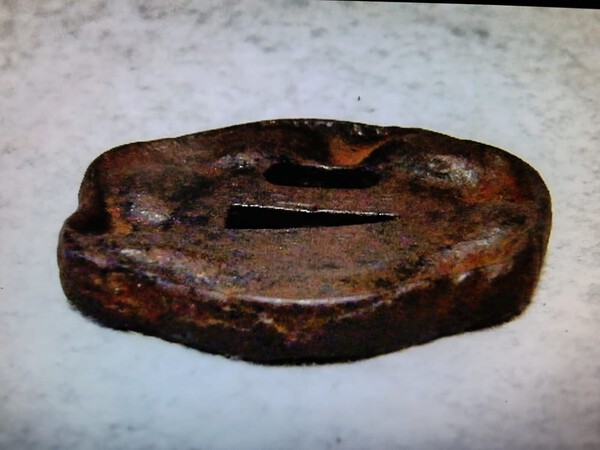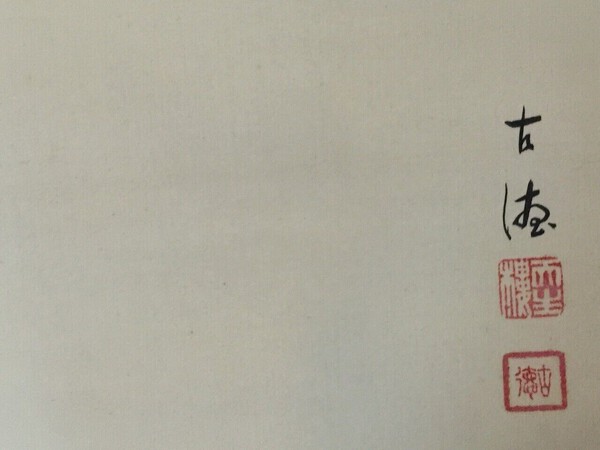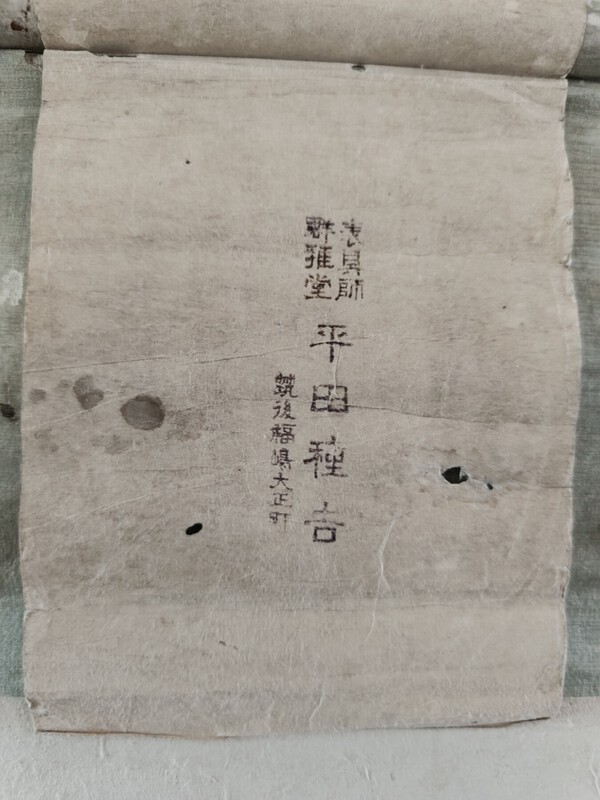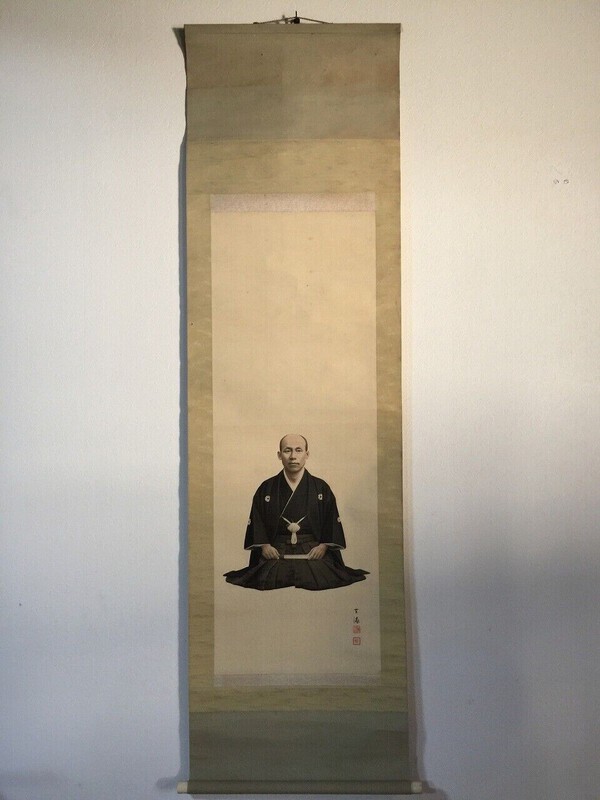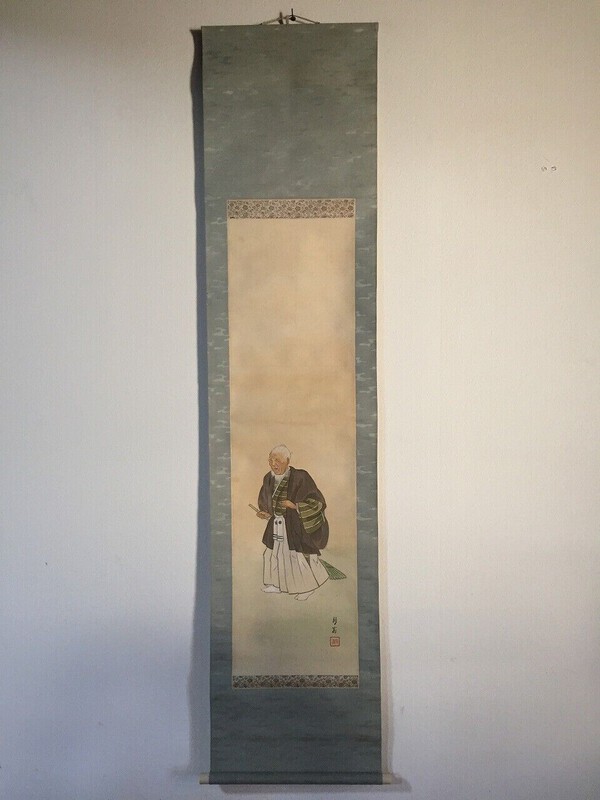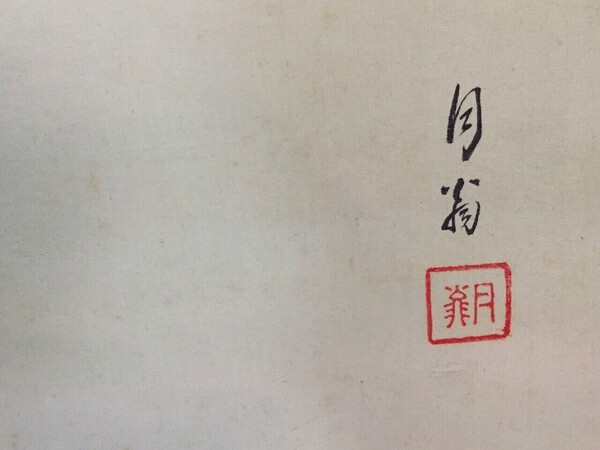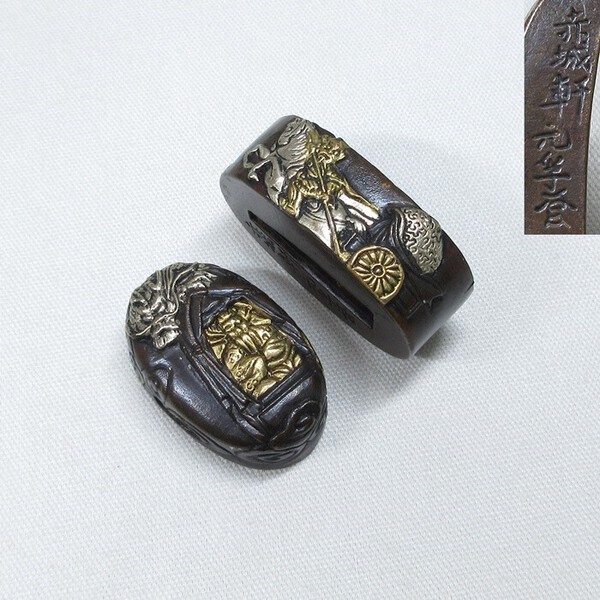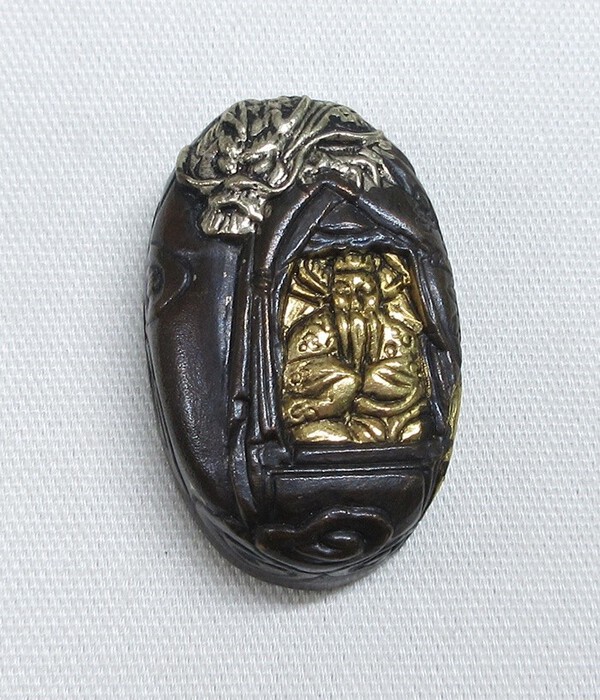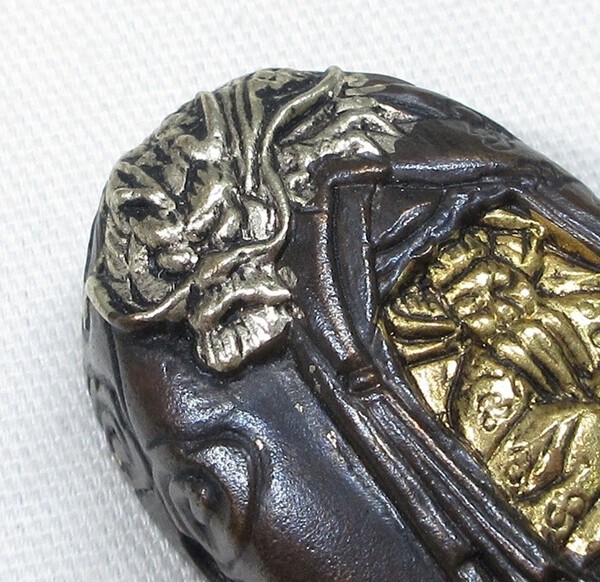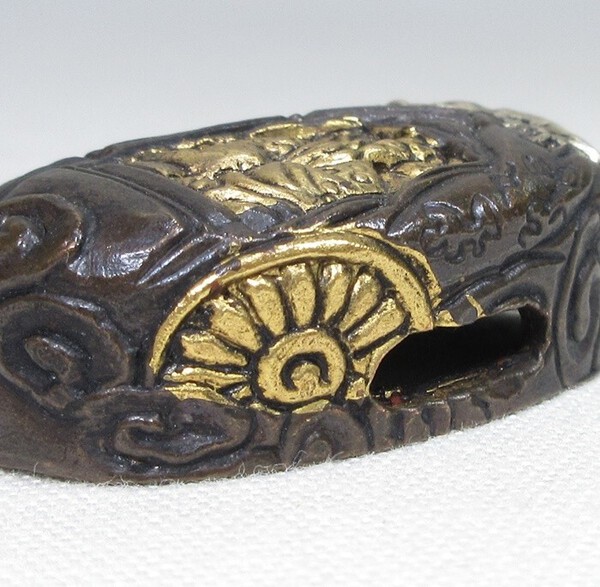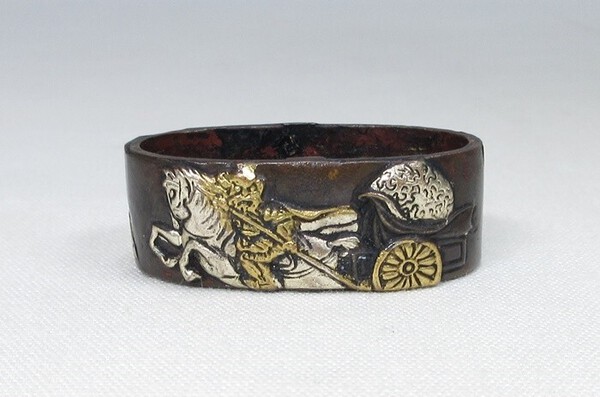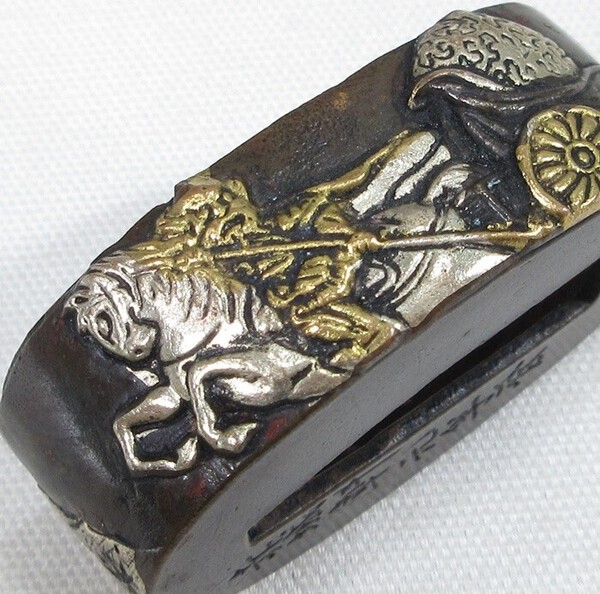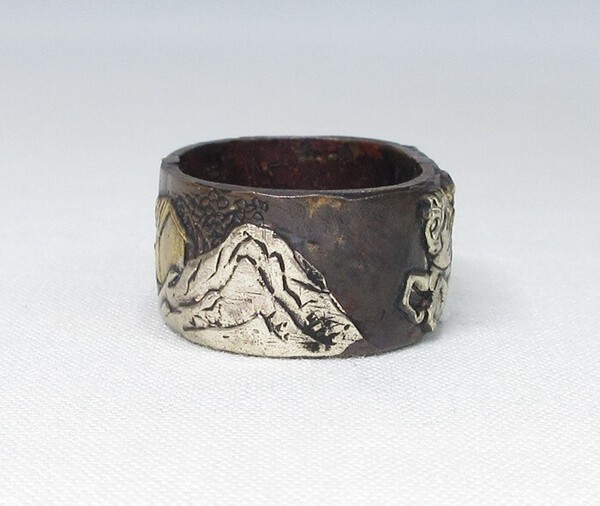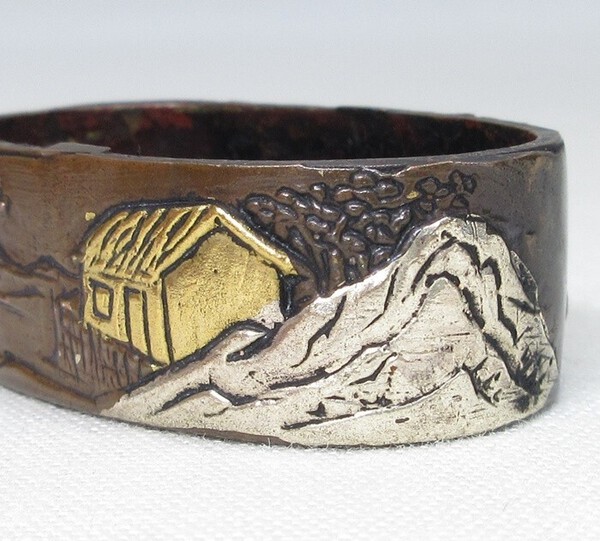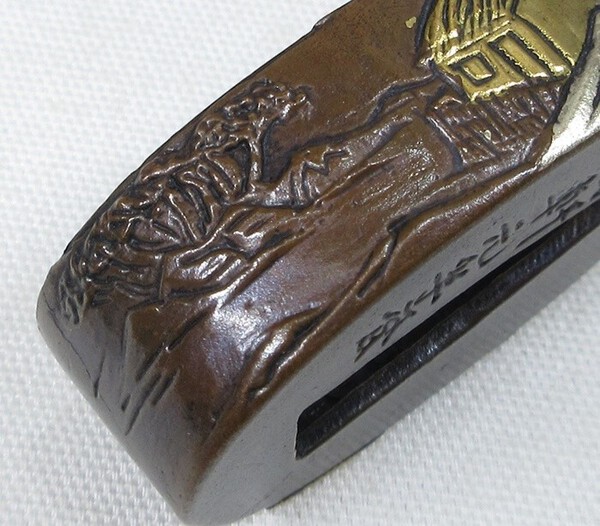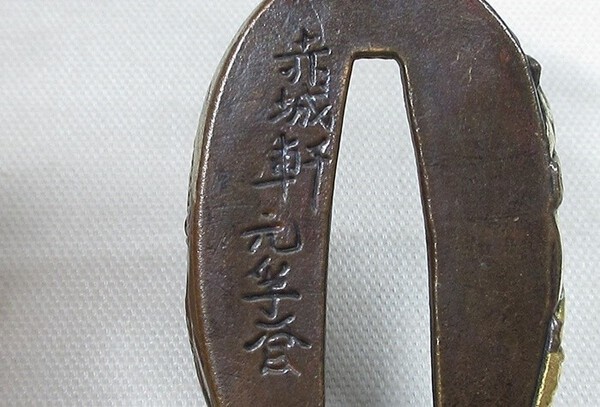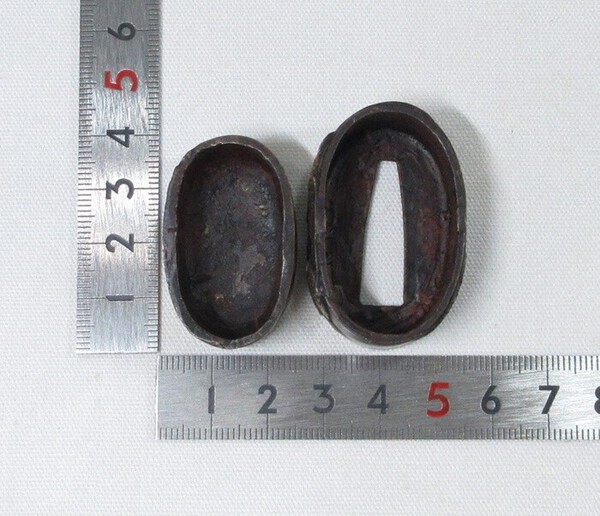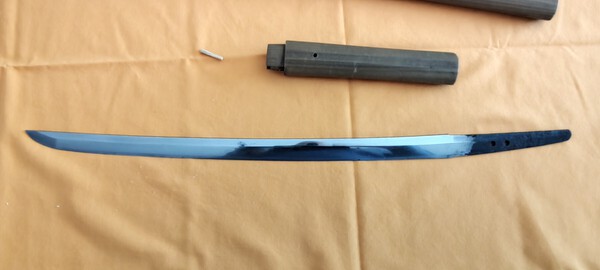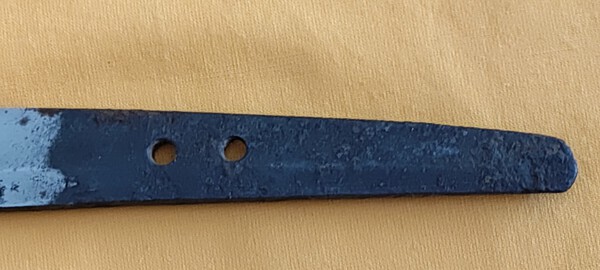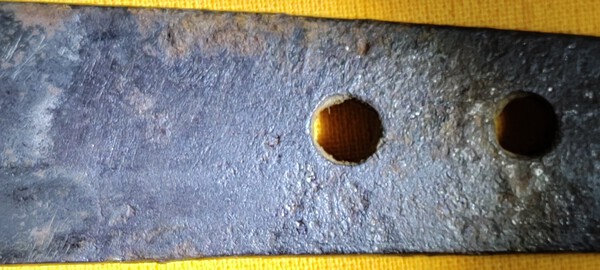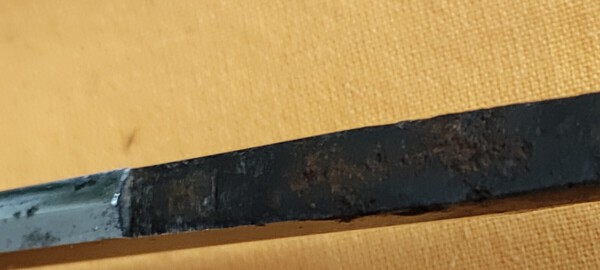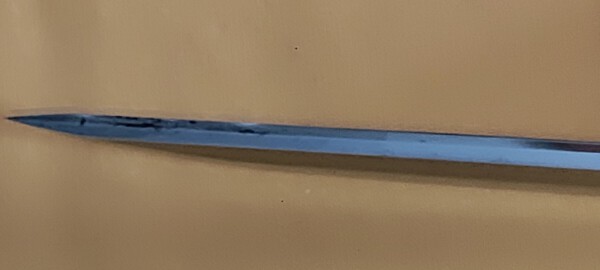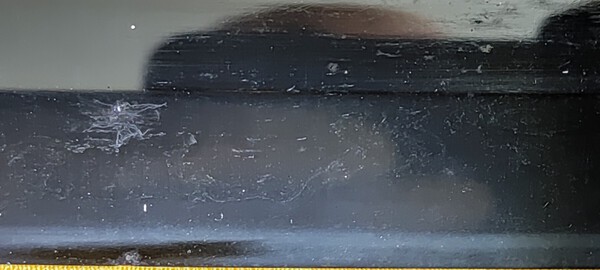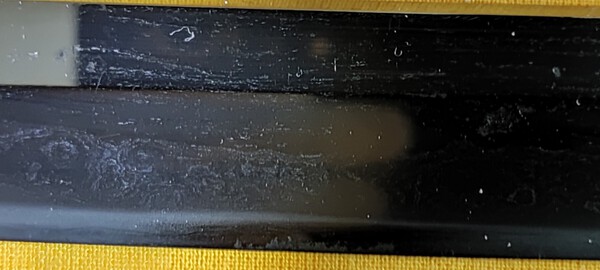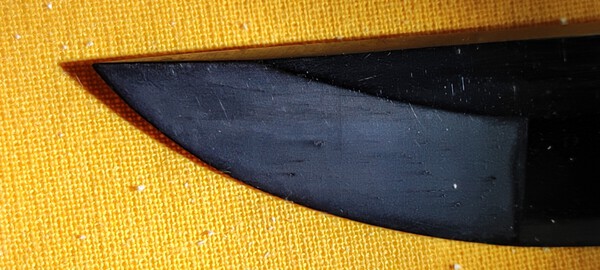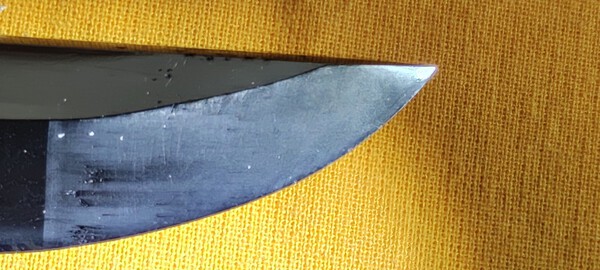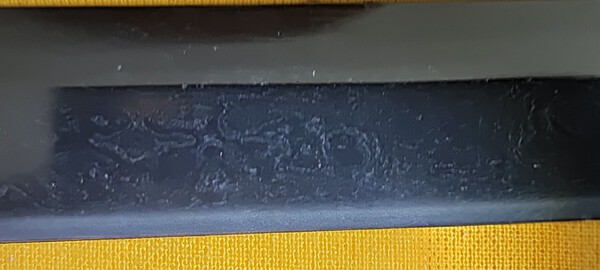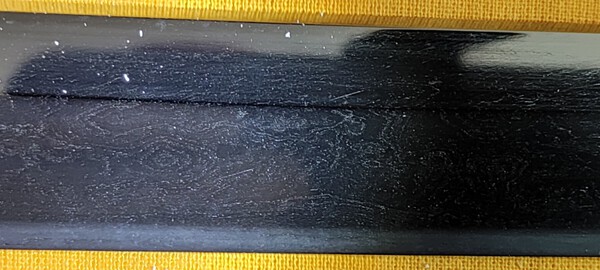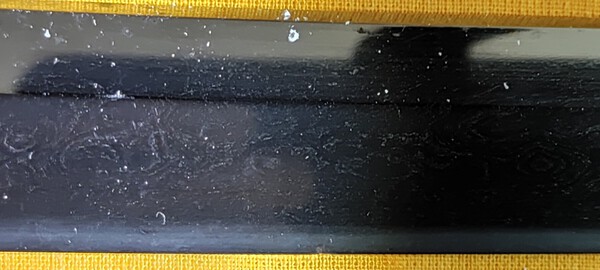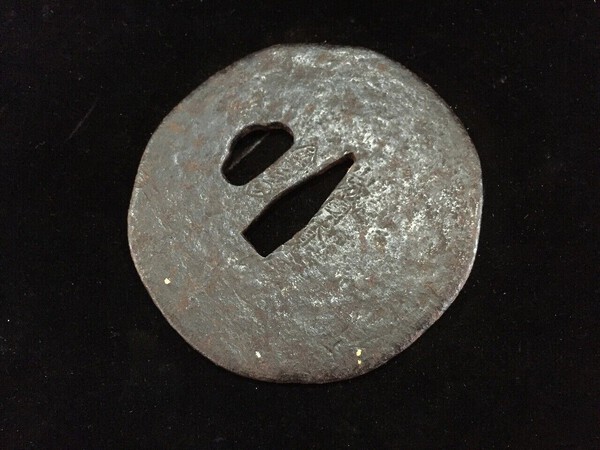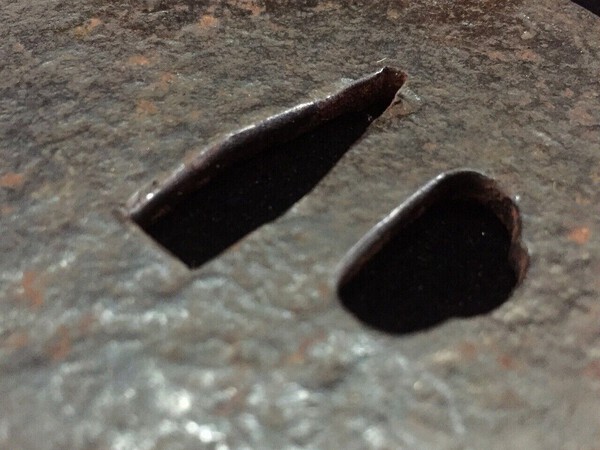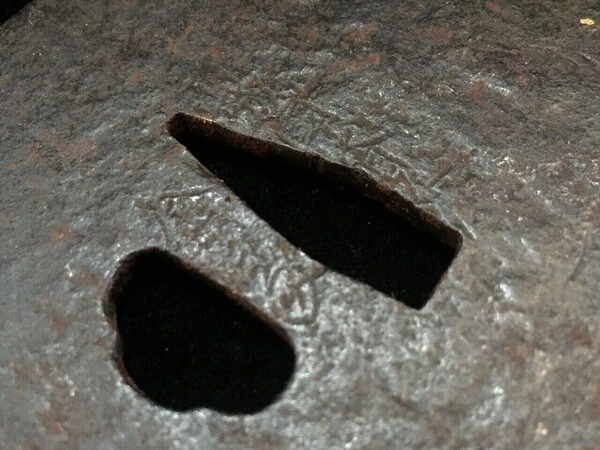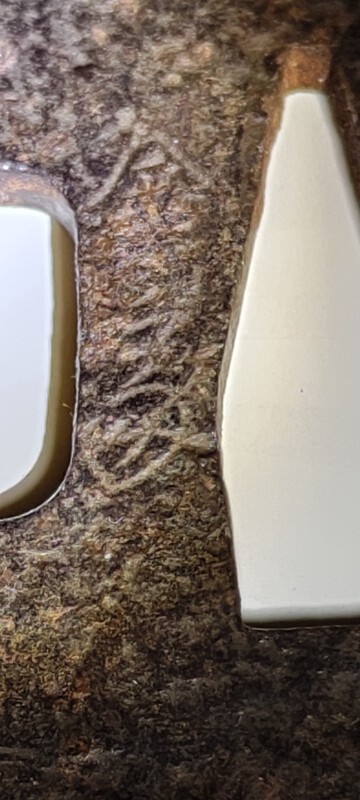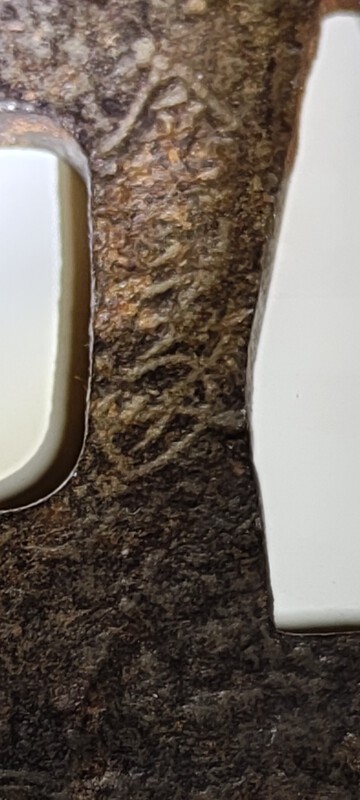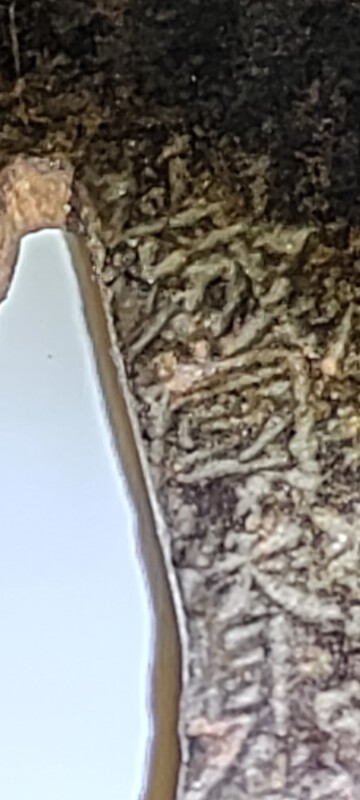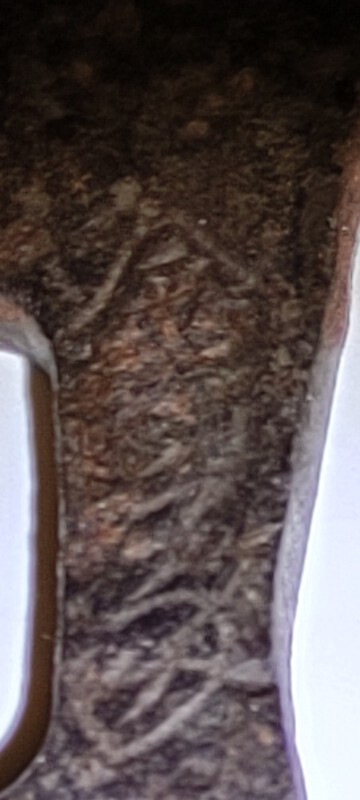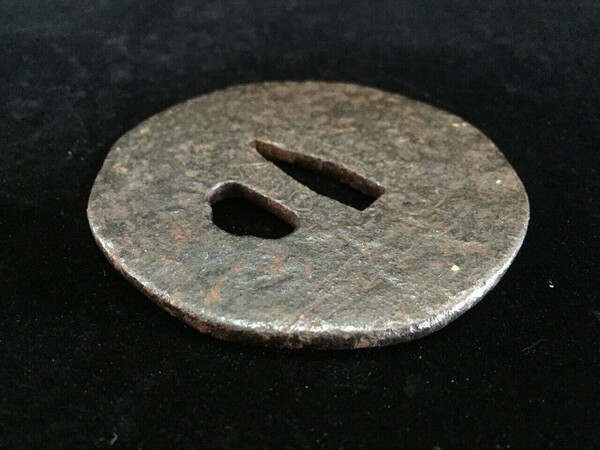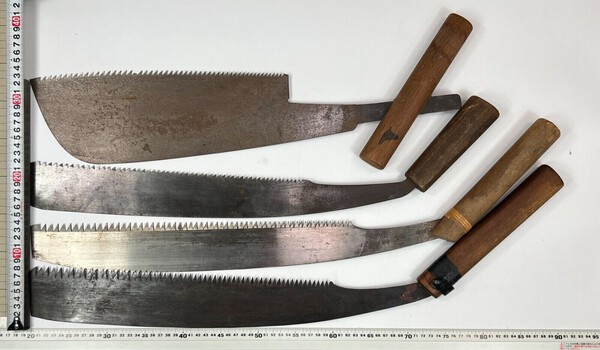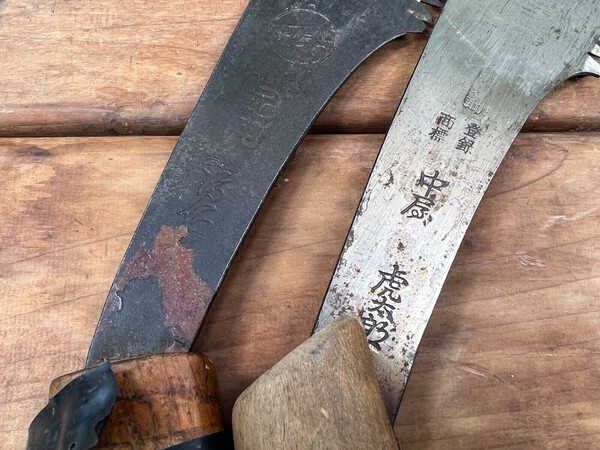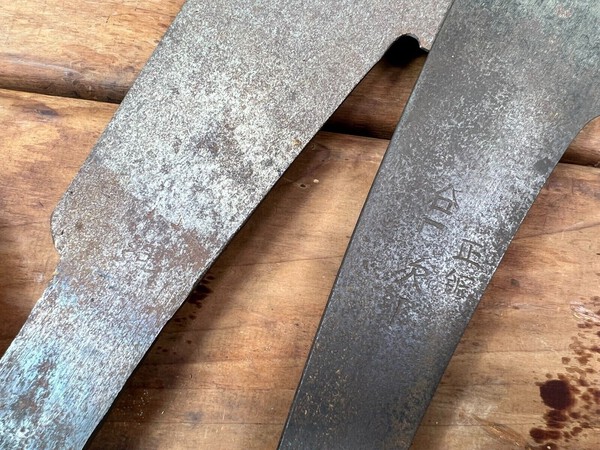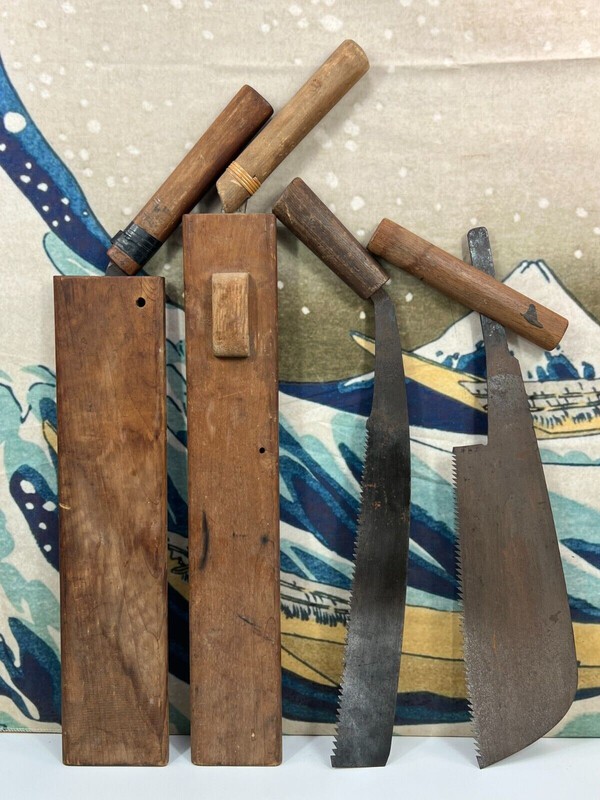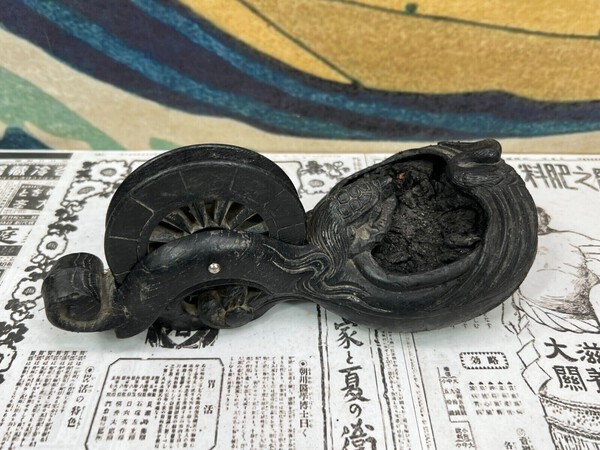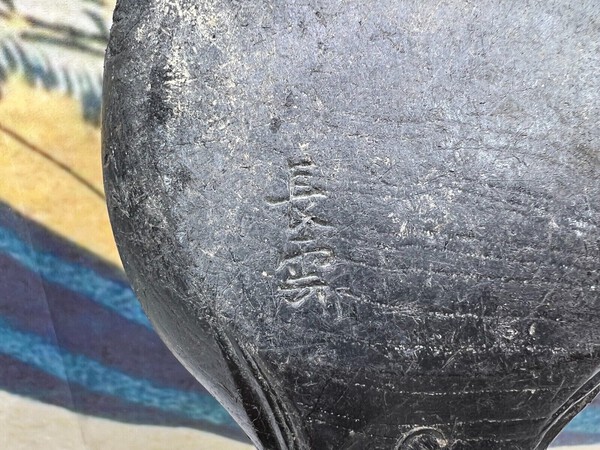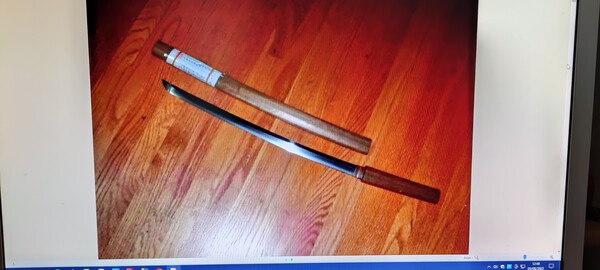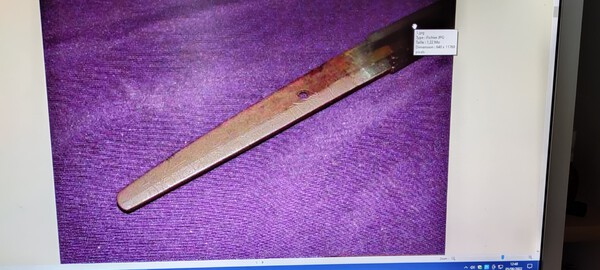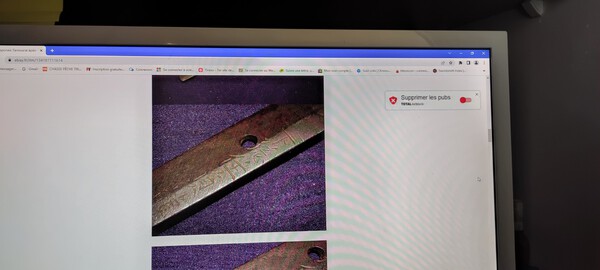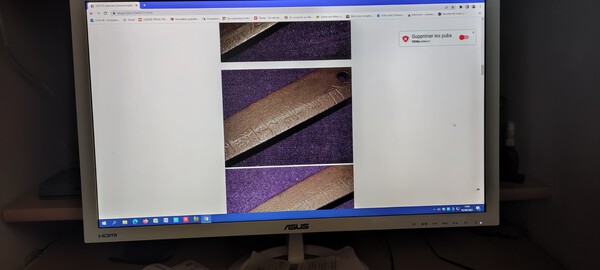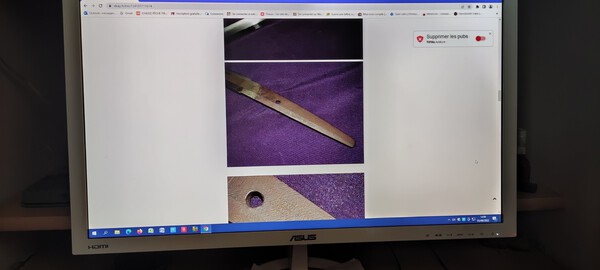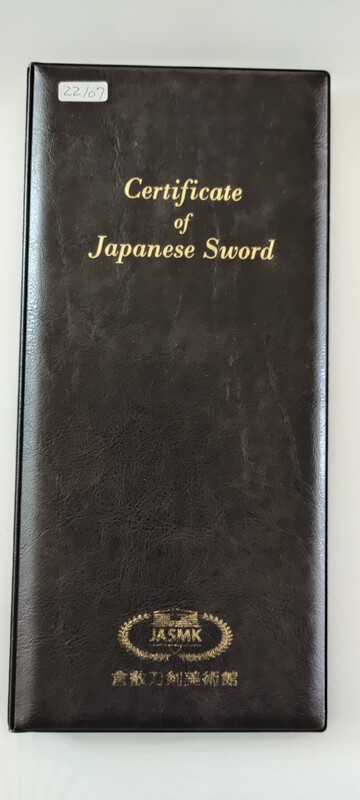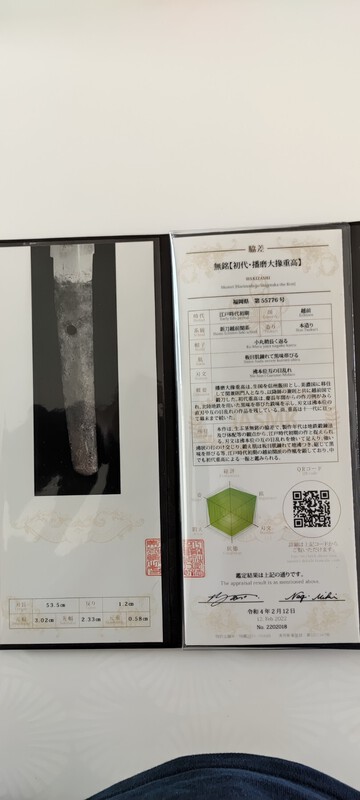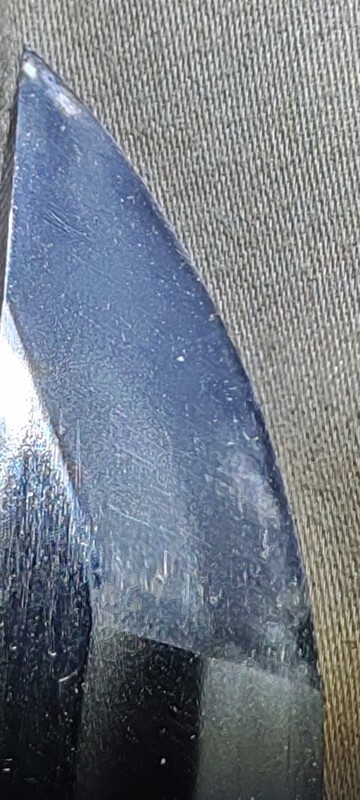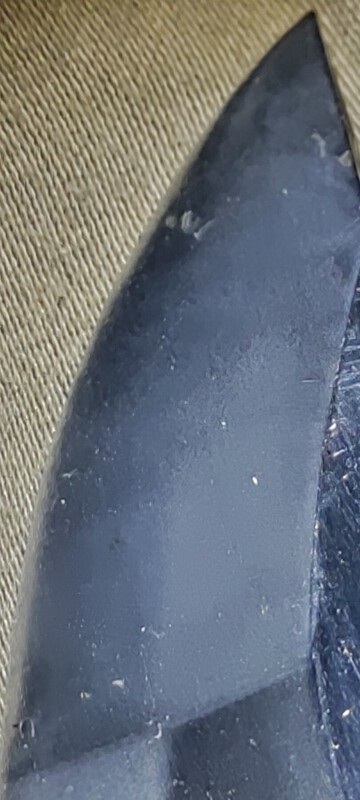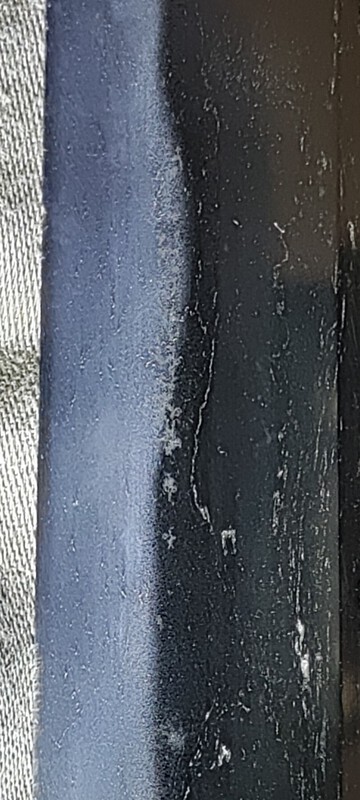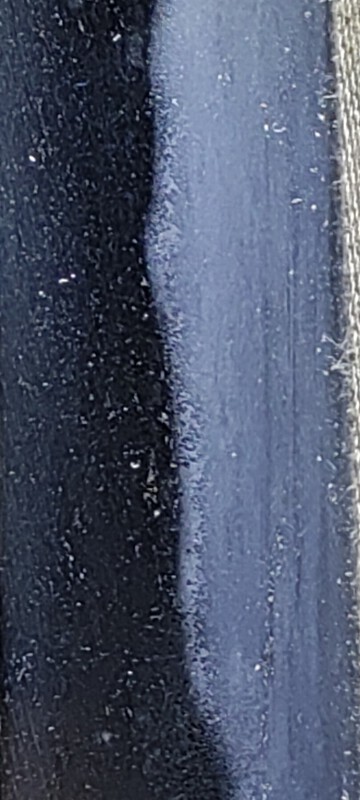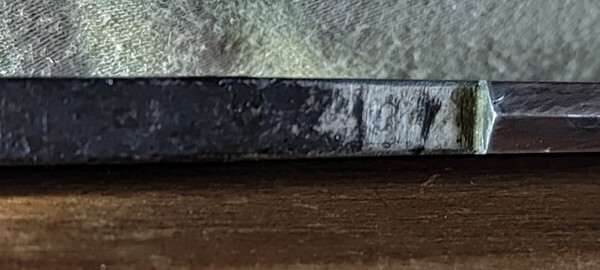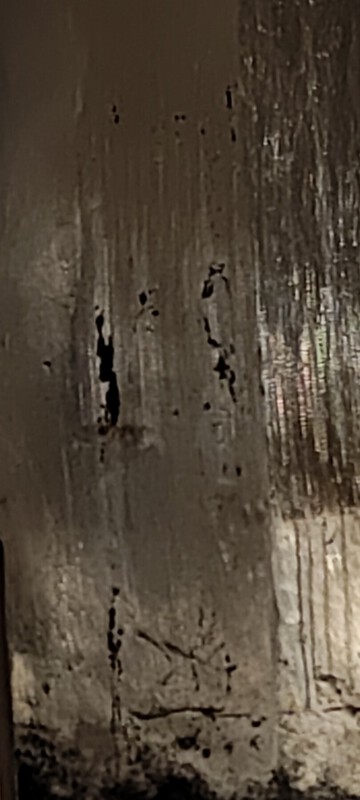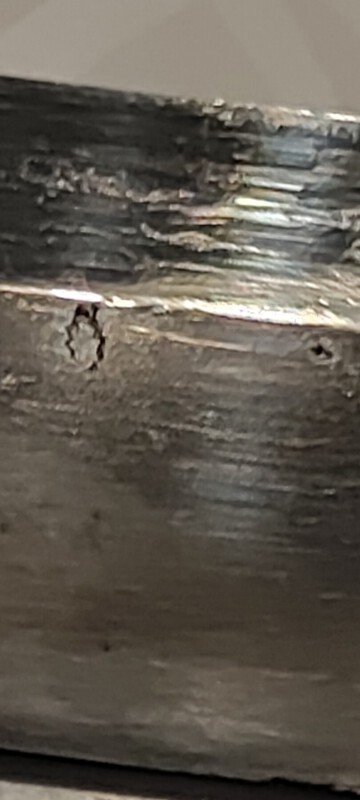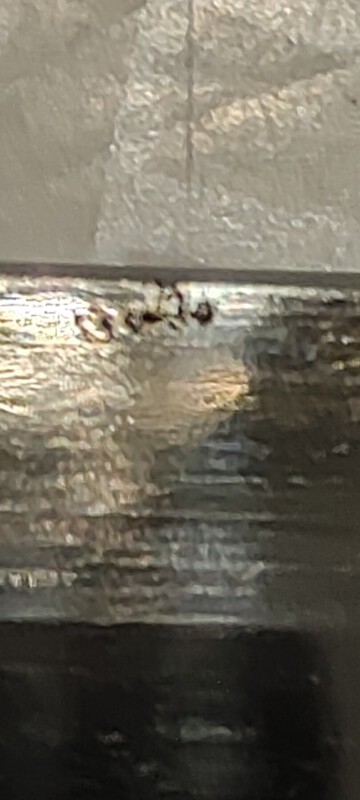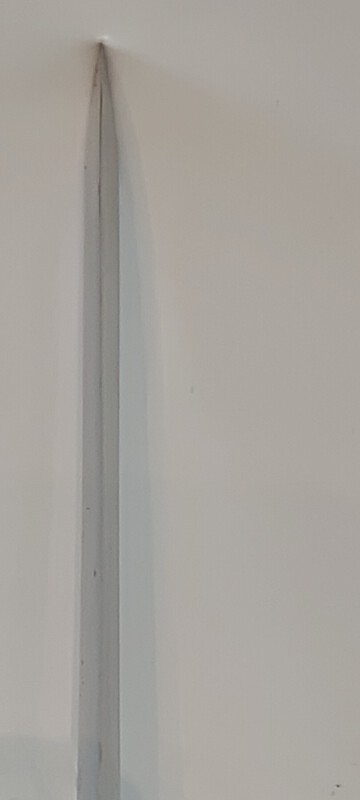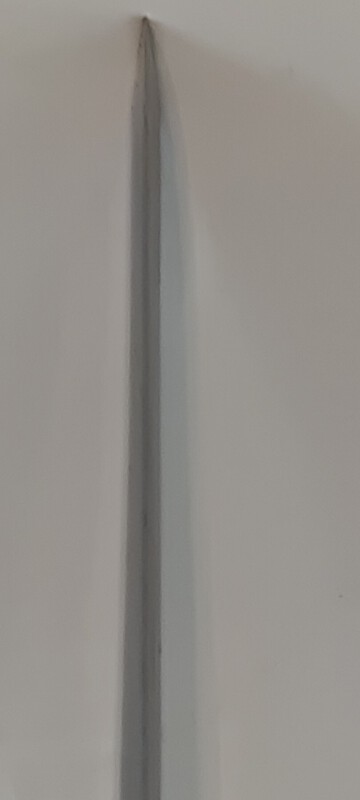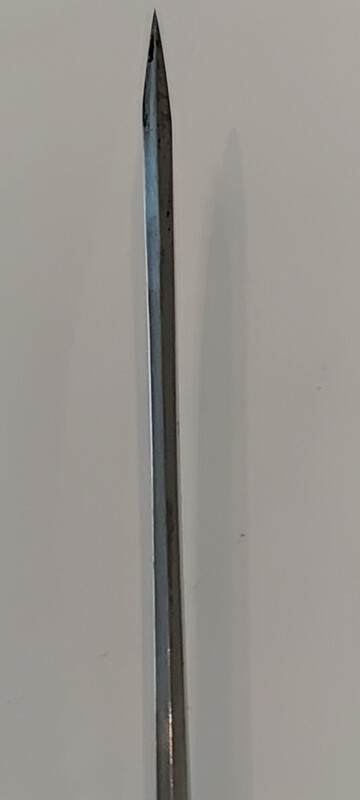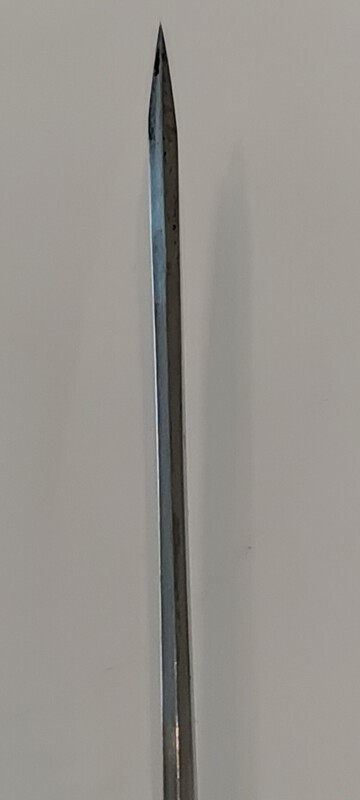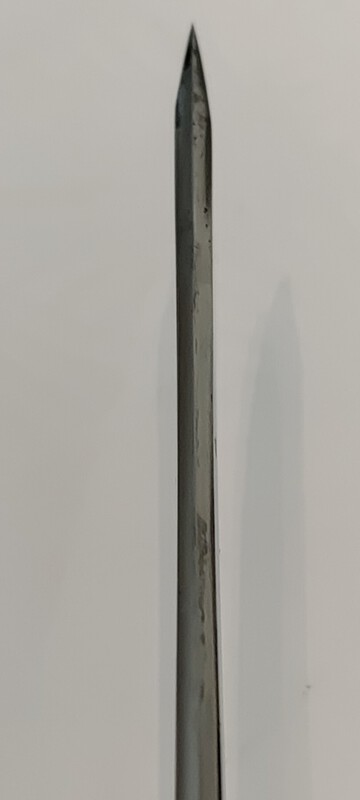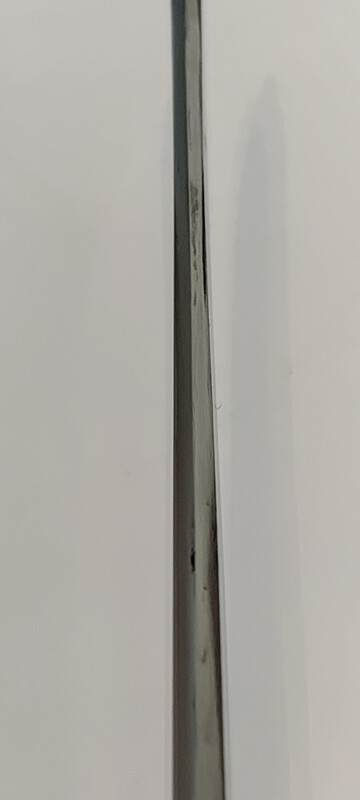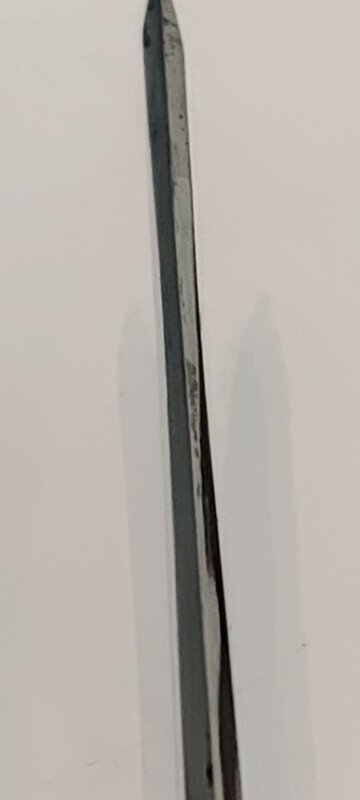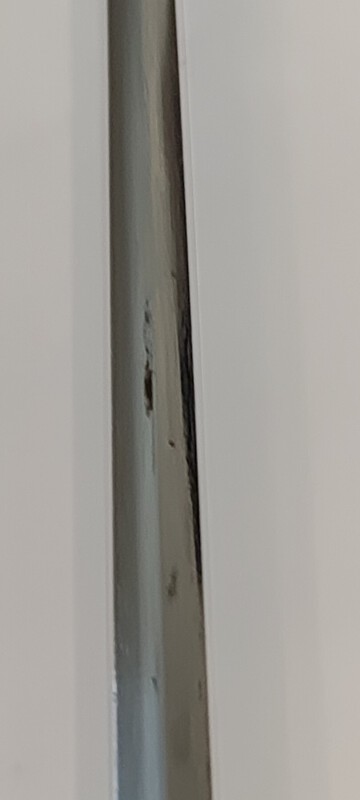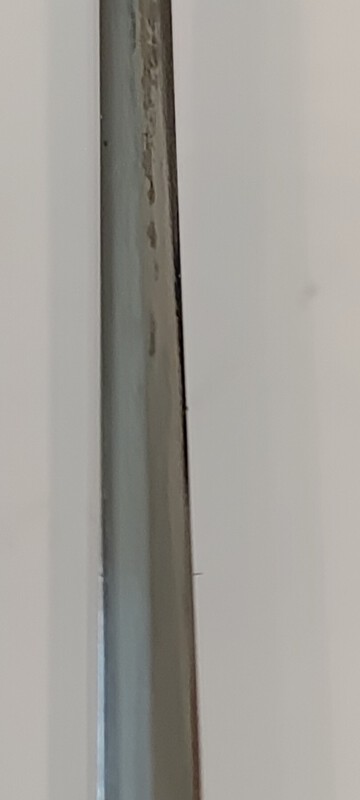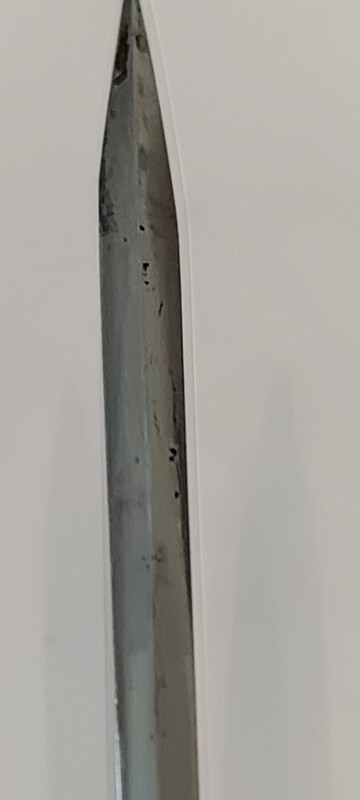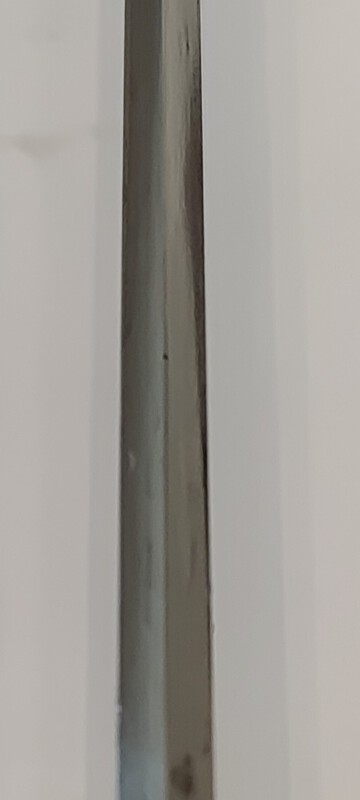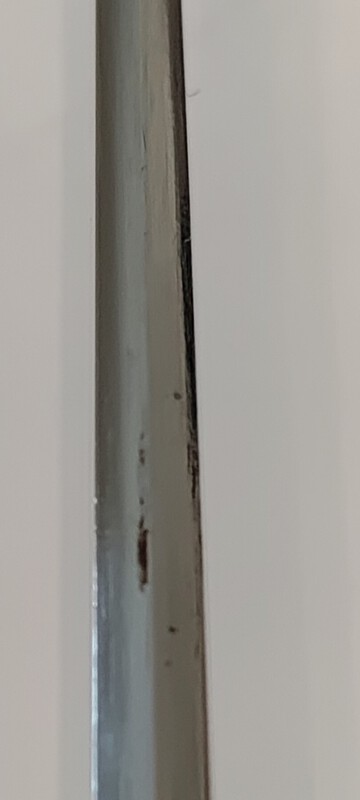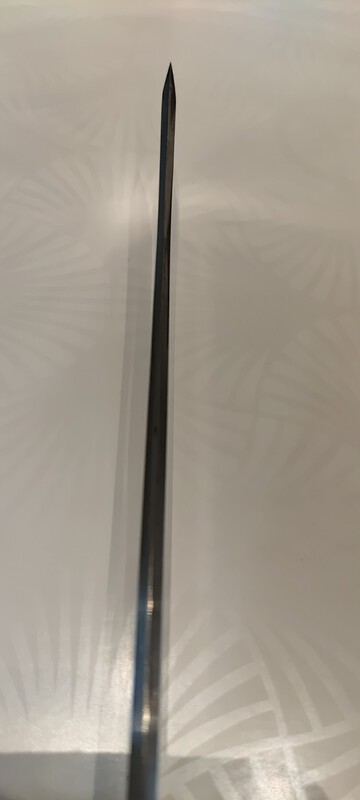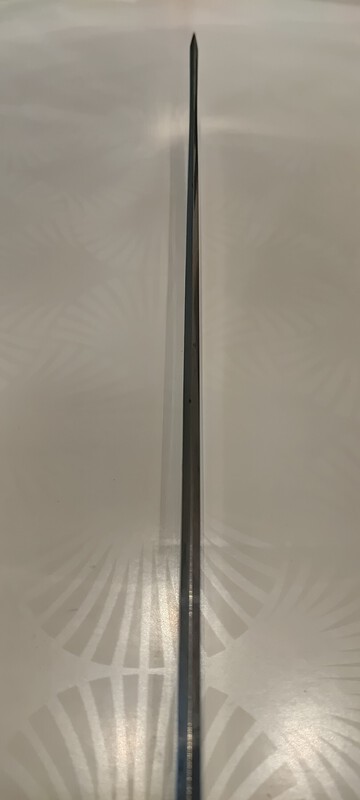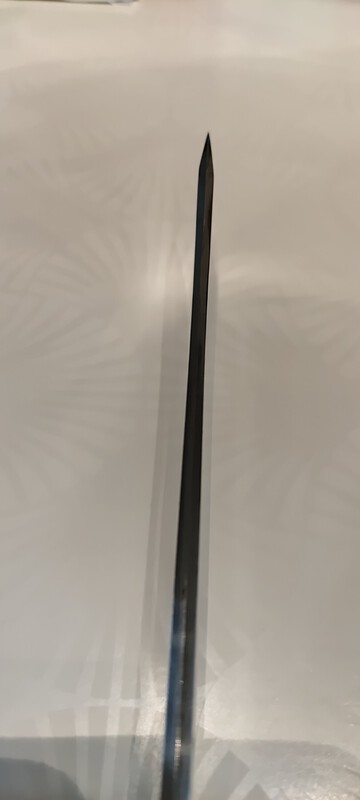
rodrig4
Members-
Posts
127 -
Joined
-
Last visited
Everything posted by rodrig4
-
Caractéristiques de l'objet Matière première Tamahagane Original/reproduction Original antique Région d'origine Japon Non signé. Nagasa 28,3 cm. Sori 0,4 cm. Motohaba 2,8 cm. Motogasane 0,6 cm. Sakihaba 0,0 cm. Sakigasane 0,0 cm. Le Hamon : semble être un gunome avec kinsuji (金筋) , tobiyaki (飛焼き) . Le hada : muji-hada (無 地 肌) : Le terme muji-hada est utilisé lorsqu'un jihada n'est pas perceptible parce qu'il est si étroitement forgé. Une combinaison populaire de koshi-bi est le gomabashi (護 摩 箸), des baguettes rituelles stylisées qui sont essentiellement une variante plus courte du futasuji-ji. SUGATA : unokubi-zukuri (鵜首造) : Semblable au kanmuri-otoshi-zukuri mais avec seulement le shinogi-ji du milieu ncliné, c'est-à-dire que la zone de base est en shinogi-zukuri normal et que la zone kissaki s'étend à nouveau. Un unokubi-zukuri est parfois interprété avec un yokote et est généralement vu sur le tantô et le wakizashi. Boshi : Maru-O (Daimaru) - Grand Kaeri arrondi. Nakago : Iriyamagata-jiri (forme en V asymétrique) L'iriyamagata-jiri a une extrémité en forme de V, mais le côté pointu est plus long que le côté arrière (mune). Il est similaire au ha-agari kurijiri, mais ses deux bords sont linéaires et non bulbeux. Le côté tranchant du nakago présente un angle aigu en bas, tandis que l'autre côté présente un léger angle vers le haut par rapport au côté arrière (mun). Mune : Le mune est iori-mune. Ce tanto présente un shirasaya. Prix : 590 euros.
- 1 reply
-
- 1
-

-
hello. I have just acquired a tanto. I was told that the koshirae de tanto were never equipped with kozuka??? cordially. RG.
-
hello. here is a kakemono that has a signature on the back and I can’t make the connection with the kakemono. Help would be welcome. Thank you in advance and have a good day. RG.
-
hello. here is a kakemono that has a signature on the back and I can’t make the link with the kakemono. Some help would be welcome. Thank you in advance and have a good day. RG.
-
bonjour. je n'arrive pas à traduire tous les kanji de cette tsuba, cependant il me semble qu'à droite de la tsuba le dernier kanji semble être yuki. pourriez-vous me donner un coup de main pour cette traduction. merci d'avance et bonne journée. RG.
-
Wakizashi Signed:備州長船住康光 Bishu Osafune ju Yasumitsu.
rodrig4 replied to rodrig4's topic in Swords and Edged Weapons
-
wakisashi signed 宇 多 國 宗(Uda Kunimune). Muromachi period. Samurai art __ Material: wood, iron, copper. Description of the article Weight: 687 grams. Total length:28.543 in (72.5 cm) Nagasa length: 18.622 in (47.3 cm) Nakago: 14.35cm Handle length: 17cm Sori (curve):0.276 in. (0.7 cm) Motohaba (width near the habaki):2,8cm Sakihaba (width near the yokote):19,5cm motoKasane (thickness at habaki):6,6cm Sakikasane (yokote thickness):4,8cm hada:mokume hamon:suguha with sunagashi Condition: Very good (antique damage) fuchi and kachira are from the EDO period. kitae kizu. PRIX 1000 EUROS.
-
Caractéristiques de l'objet matériel : Tamahagane Original/Reproduction: Antique Original Région d'origine : Japon Description de l'objet fournie par le vendeur Description de l'objet fournie par le vendeur Wakizashi Signed:備州長船住康光 Bishu Osafune ju Yasumitsu. Nagasa 41.5 cm. Sori 0.9 cm. Motohaba 2.8 cm. Motogasane 0.6 cm. Sakihaba 1.9 cm. Sakigasane 0.4 cm. Poids de la lame : 387 g Poids monté : 687. Torii-zori (華表反) : la courbure est située au centre de la lame. Il est de type de sori le plus utilisé. Aussi appelé kyo, étant une référence à la tradition Yamashiro, qui employait principalement ce type de courbure prix:760 euros.
-
Hello. This kozuka is signed but it’s hard for me to» translate the second kanji. The first kanji seems to be KANE. Could you confirm. Thank you in advance and have a good day. RG.
-
on the other hand what place this blacksmith occupied in the scale of knowledge and knowledge of his art . had a special place or was it a blacksmith among many others.
-
bonbour. could you translate these kanji because I can not decipher , ormis the first two kanji of this tsuba signed myoshin. Thank you in advance and have a good day. RG.
-
Good morning. This is a recent acquisition and I would like to understand what these kanji mean and this stamp that I present in these photos as well as this label. Main material: silk. Original/Reproduction: Vintage original Hand painting: printing. Region of origin: Japan Age: 1900-1940 Manufacturer: Japan Thanks in advance. R.G.
-
Good morning. This is a recent acquisition and I would like to understand what these kanji and this stamp that I present in this photo mean. Primary Material:Silk Original/Reproduction:Vintage Original Hand Paint:Print Region of Origin:Japan Age:1900-1940 Maker:Japan thanks in advance. RG.
-
Good morning. here is this fushi and kashira set that I recently acquired. It is dated according to the seller from the MEIJI period. I decoded among the kanji of the signature a kane and a mitsu without being able to translate entirely. I thank you in advance if you can fix it. RG.
-
_Good morning. I am perplexed by these clear or dark, it all depends on the lighting,spots on the hamon. this wakisashi was sold to me as uda kunimune from uda school with certificate from NBTHK. the hamon seems to be suguha and the ji mokume. the part above the shinogi is different from the ji which seems to confirm an era. Could you give me your opinion on my conclusions? _Muromachi period. samurai art __ Size: Koshirae Overall Length: 28.543" (72.5cm) Blade Length: 18.622" (47.3cm) / Sori: 0.276" (0.7cm) Weight: 687 grams (Packaging: 600g)
- 1 reply
-
- 1
-

-
Good evening. The signature of this tsuba puzzles me. Already because I can't translate it and then because it is made up of kanji that I'm not used to seeing. its dimensions are 7 cm for 122grs. Have a good evening. RG.
-
Good evening. here are some signed objects from the MEIJI period. maybe you will help me to decipher these kanji. thank you and good evening. RG.
-
Hello to you. I have just acquired this wakisashi signed KUNICHIKA and I find very little trace of this blacksmith. maybe you could tell me more. Thank you in advance and good day. RG.
-
Hello. I return to the subject of this shrunken wakisashi just before the boshi. This blade was delivered to me with a JASMK certificate. Here are some pictures of this blade as well as the certificate. Cordially. RG. PS: It must be recognized that there are many kitae kizu. I did not photograph the bare blade.
-
Hi there. Having examined this blade, I can say that the boshi is not reinforced. The shrinkage is fluid and homogeneous. There is a slight curve due to the narrowing on both sides and this thinning of the ji as well as the edge of the Hamon are very straight. Have a good day. RG.
-
good evening. Could you explain to me if this narrowing of the blade just before the boshi is normal? Cordially. RG.


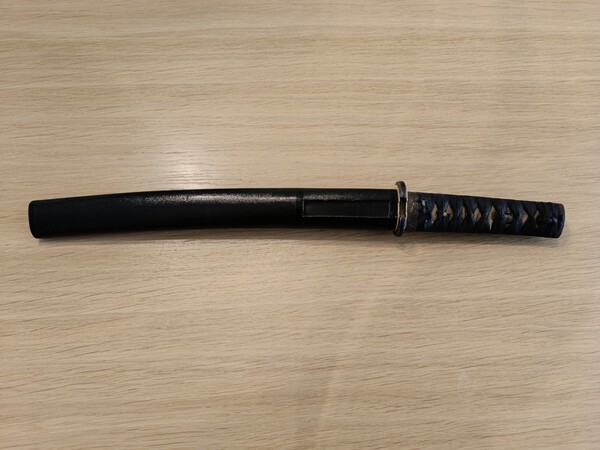




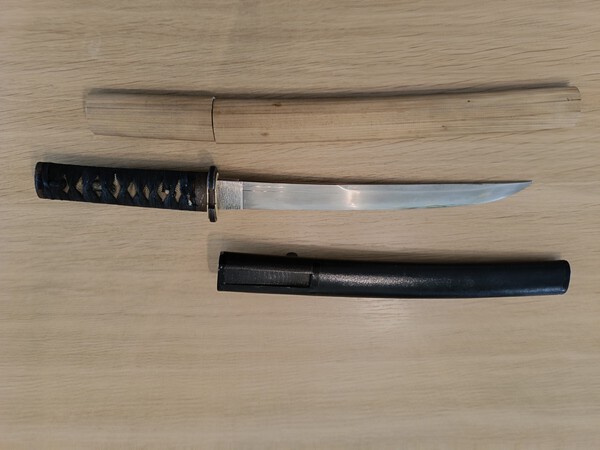





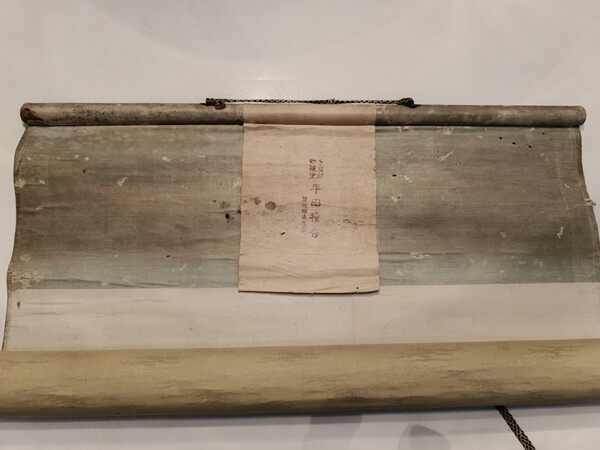





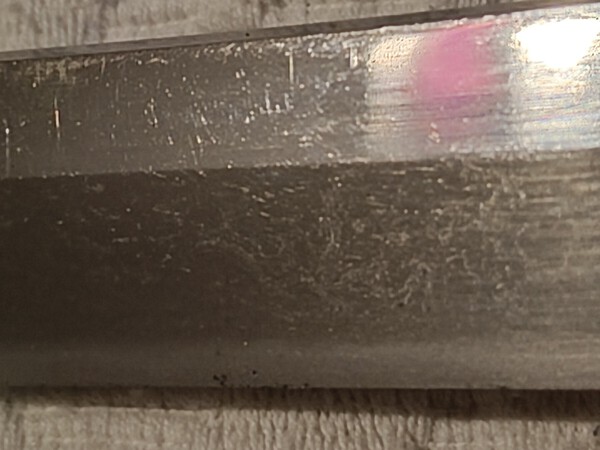






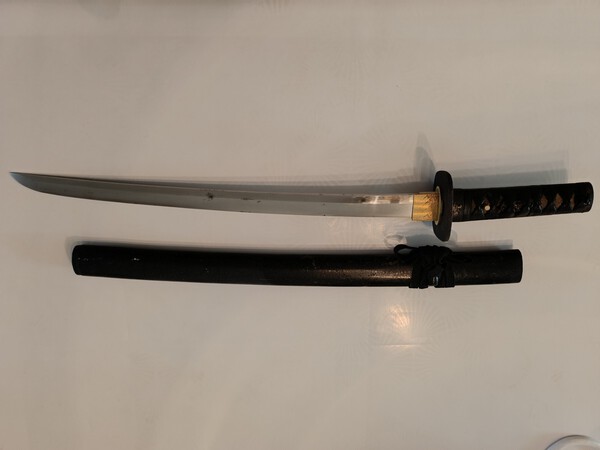





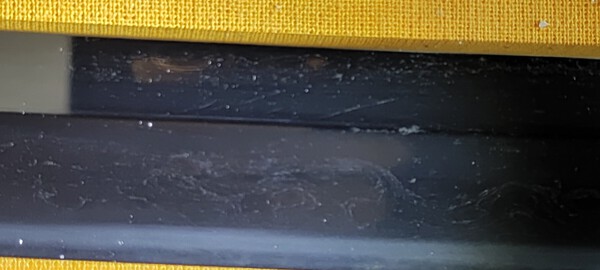



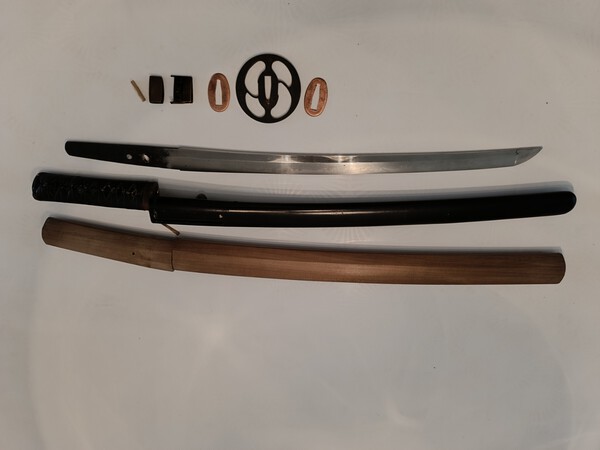
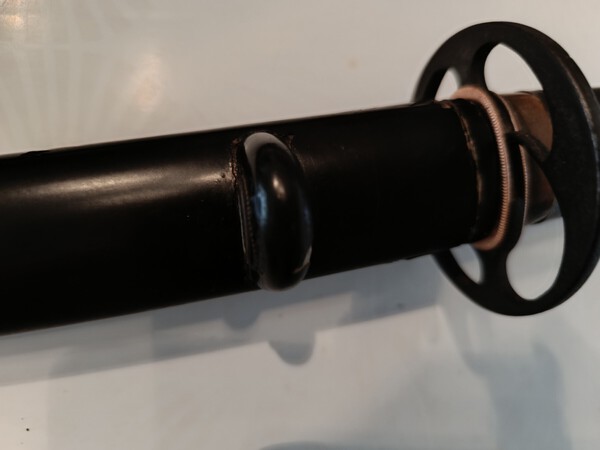



.thumb.jpg.9322df3a9e918ecc902dbd3a7a5b966e.jpg)





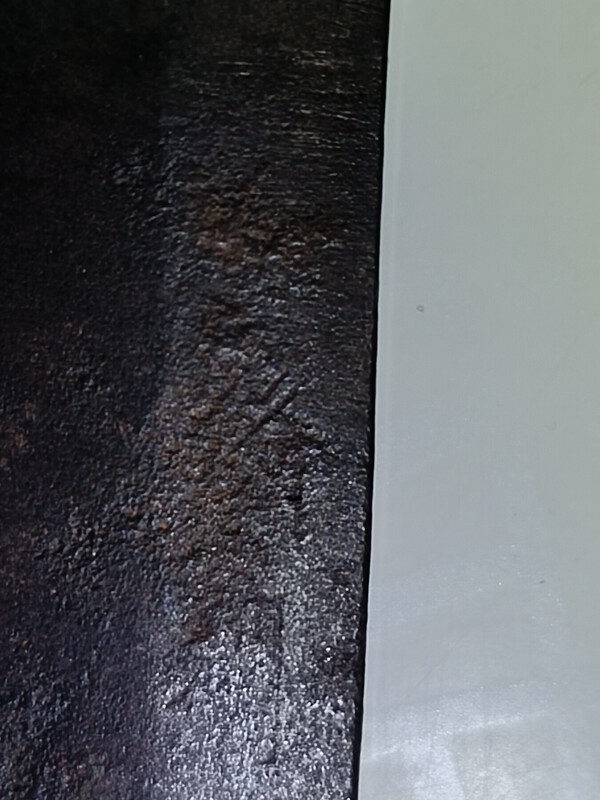

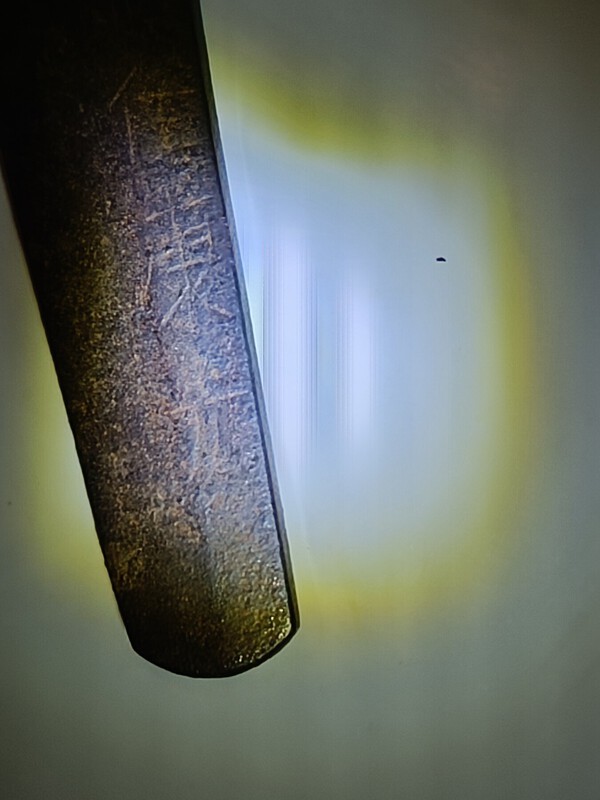











.thumb.jpg.9fb712a521231d8bf672887bf4ec6d77.jpg)

